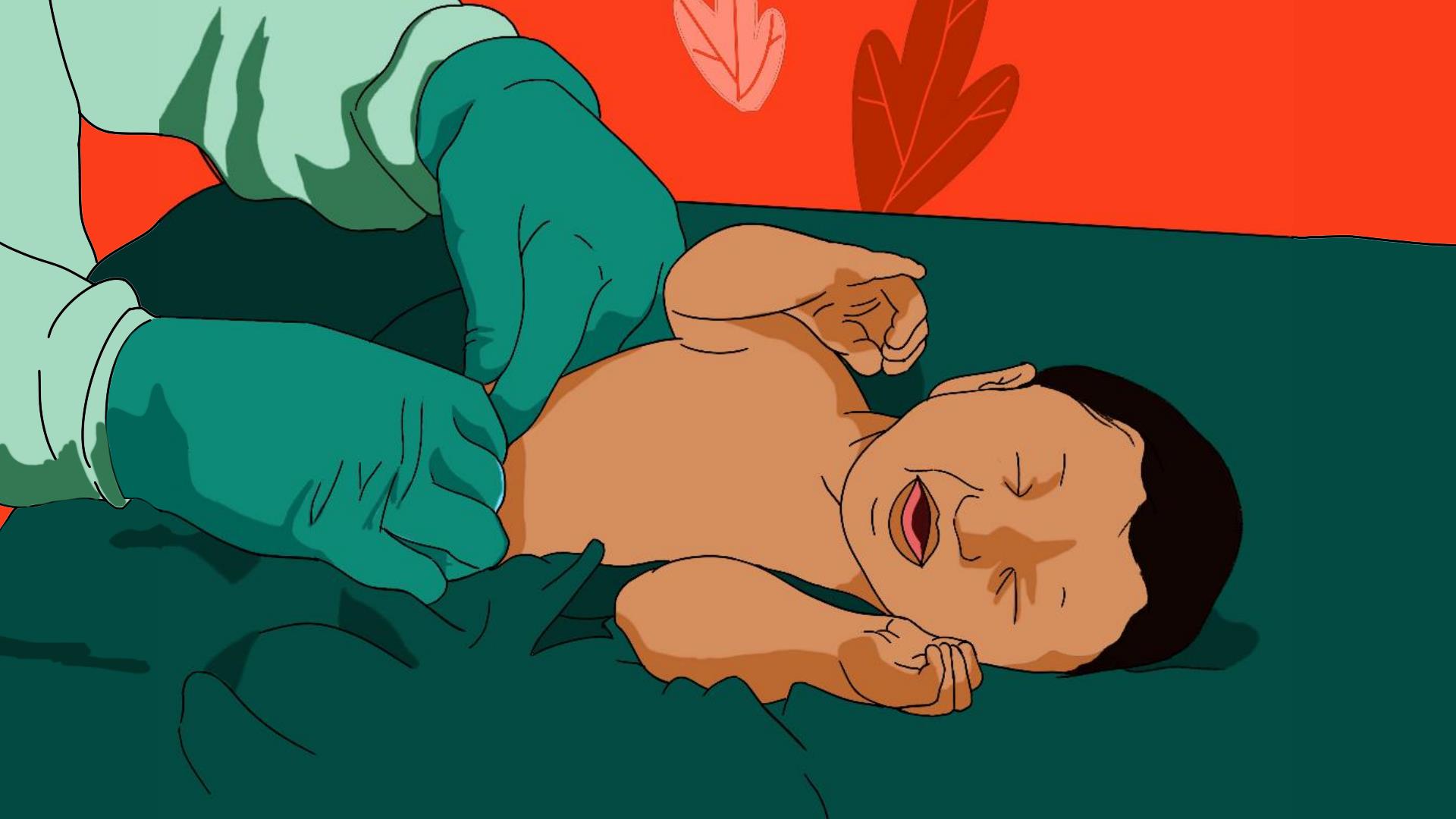🎧 Listen to: Childbirth (Normal Labor and Delivery)

Childbirth (Normal Labor and Delivery)
What is childbirth?
For every expectant mother, the biggest hope is to have a smooth delivery and a healthy baby. In Africa, childbirth is a significant event, often surrounded by cultural practices and family involvement. In Ghana, for example, about 88% of births happen through vaginal delivery, which is the most preferred method by women.
Childbirth can be planned, but things do not always go as expected. Some women prepare birth plans that include their preferred mode of delivery, pain relief options, and delivery positions. However, doctors and midwives may need to adjust these plans based on the mother’s health and the baby’s condition.
How do you know labor has begun?
Labor is the natural process where a baby moves from the mother’s womb into the world. A spontaneous vaginal delivery means that labor begins without medical intervention. You can tell that labor has begun through:
- Contractions: These are the tightening and releasing movements of the womb. They help push the baby out. However, not all contractions mean labor. Some women feel Braxton-Hicks contractions, which are like practice contractions and can start as early as the second trimester.
- Water breaking (seeing liquor): This is when the fluid around the baby leaks out. It usually means labor is starting, but sometimes, water breaks too early. If this happens before your due date, see your midwife immediately.
- Cervix opening: The cervix is the lower part of the womb that must open for the baby to pass through. Labor is considered active when the cervix opens at least 4 centimeters.
How long until the baby comes out?
The cervix must open up to 10 centimeters for the baby to pass through. This process can take up to 6 hours or more from the time the cervix is 4 centimeters open.
Once the baby moves down, the vagina and surrounding skin stretch. Sometimes, if the space is too small, the doctor or midwife may make a small cut in the perineum (the area between the vagina and anus) to help the baby come out. This is called an episiotomy.
After the baby is born, the umbilical cord (which connects the baby to the mother’s womb) is cut. The placenta (which provided food and oxygen to the baby) is then delivered. This can happen immediately or take up to 30 minutes.
Can labor be painful? What are the pain relief options?
Yes, labor is painful, but there are ways to reduce the pain:
- Epidural anesthesia: This is the most common and effective pain relief. It is given through a small tube in the lower back and reduces pain while allowing the mother to stay awake.
- IV medications: Some medicines can be given through a drip to help with pain, but they must be used carefully, depending on how far labor has progressed.
- Breathing and relaxation techniques: Deep breathing, massages, and changing positions can also help reduce discomfort.
Can a woman get injured during childbirth?
Yes, childbirth can sometimes cause injuries, especially during the first delivery:
- Vaginal tears: Up to 70% of women giving birth for the first time experience small tears in the vagina or cervix, which usually heal quickly.
- Excessive bleeding: Sometimes, if the placenta does not come out completely, it can cause heavy bleeding. In such cases, the doctor or midwife will remove the remaining placenta to stop the bleeding.
How common is childbirth-related complications in Africa?
Childbirth complications are still a major issue in Africa. According to the world health organization (WHO):
- About 200,000 women die from childbirth-related complications every year in Africa.
- Many of these deaths are preventable with better healthcare and skilled birth attendants.
- In rural areas, many women still deliver at home without proper medical care, increasing the risks of complications.
Is it safe to give birth at home?
In some cultures, home birth is common, but it is not safe for everyone. It is only advisable if:
- A qualified midwife or doctor is present.
- There are no health complications (like high blood pressure or diabetes).
- The home is close to a clinic or hospital in case of emergencies.
Home birth is not recommended if:
- The mother has had a previous C-section (Cesarean delivery).
- She is expecting twins or triplets.
- She has a medical condition like preeclampsia (dangerously high blood pressure during pregnancy).
If any complications arise, it is always best to deliver in a hospital where emergency help is available.
Conclusion?
Childbirth is a natural but unpredictable process. Understanding the signs of labor, the delivery process, and possible complications can help expectant mothers feel more prepared. In Africa, many childbirth-related complications can be reduced by ensuring skilled medical care and access to proper healthcare facilities.
Every expectant mother deserves a safe delivery and a healthy baby. Let’s take maternal health seriously and seek the right medical care for every pregnancy!
Source: Bam et al., 2021. Factors influencing decision-making to accept elective cesarean section: A descriptive cross-sectional study.
